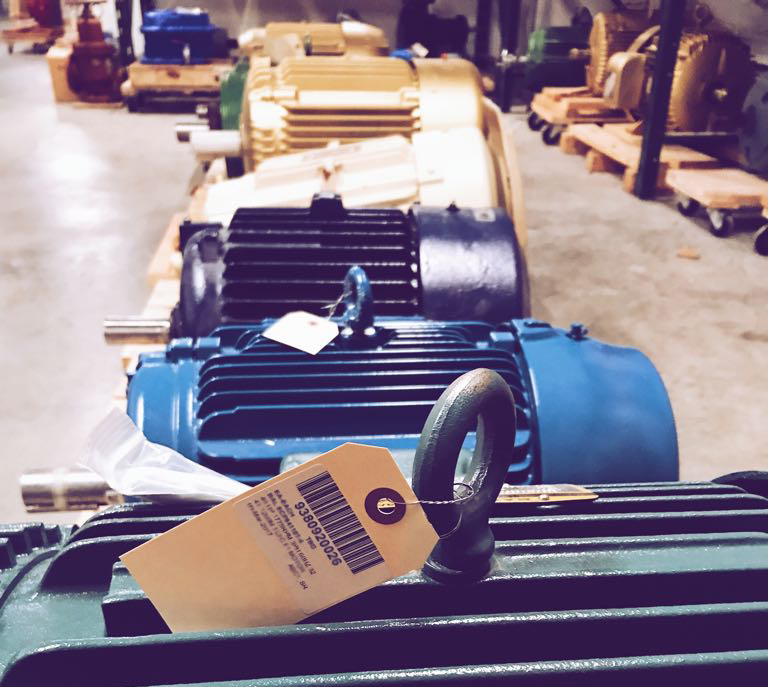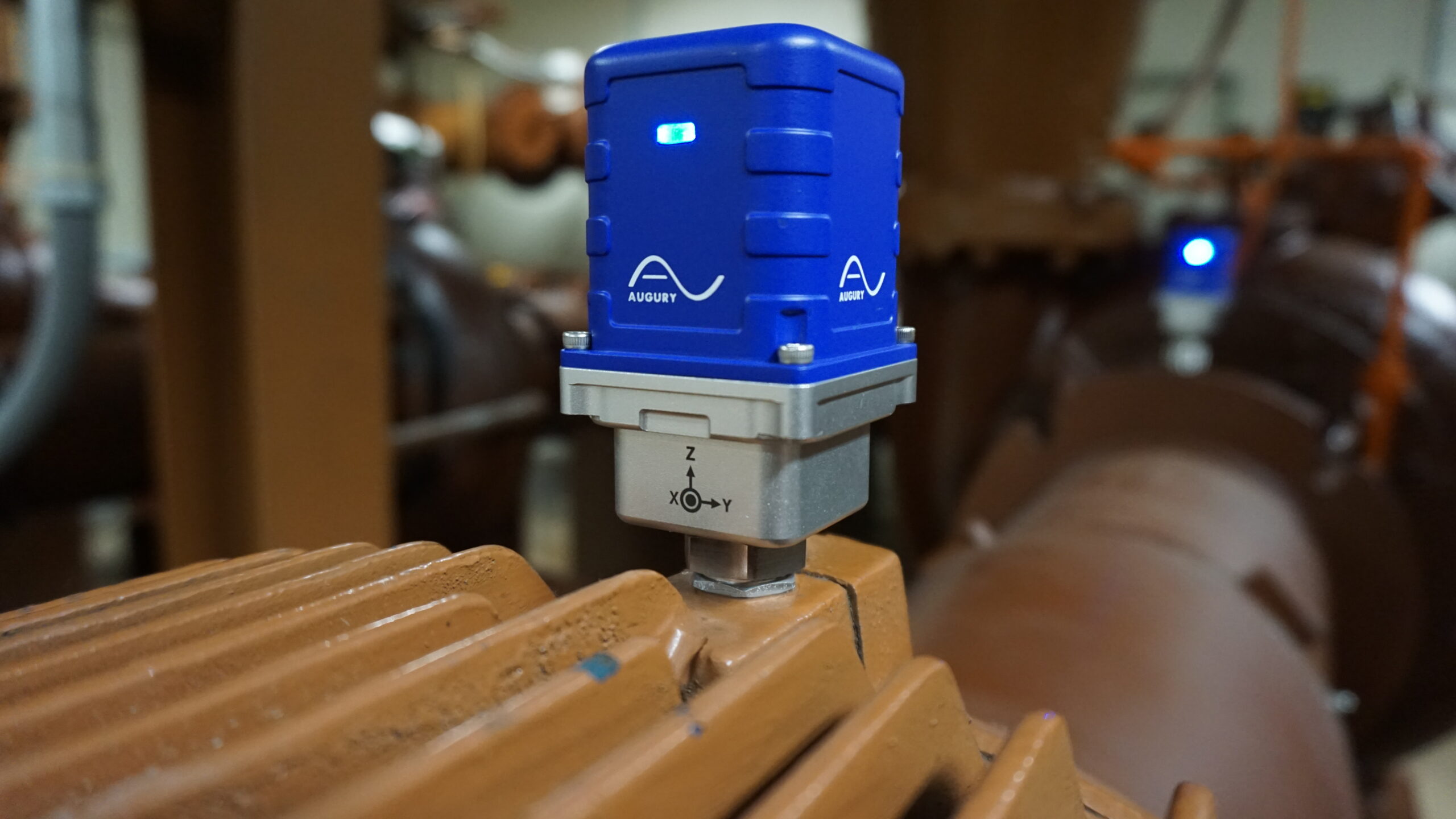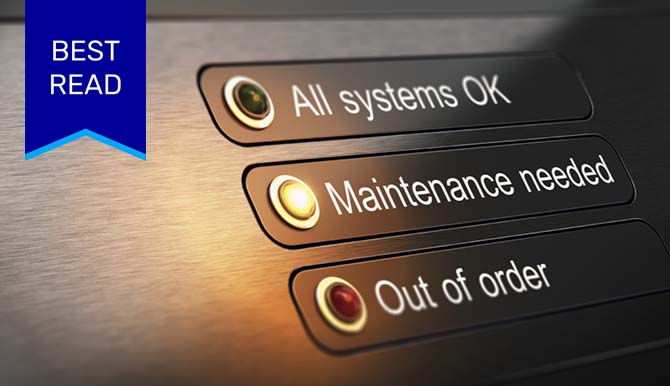
When discussing predictive maintenance, we usually think about the benefits to maintenance engineers and technicians. Much of the discourse is about reducing the number of equipment failures, inspections, and critical infrastructure downtime. Looking beyond the impact on machine health and functionality, there is an added layer of value to the accountants, controllers, and CFOs who manage the finances of an organization — for whom unplanned downtime and accidents can upend any well-planned budget.
Predictive maintenance can help finance departments budget more precisely and allow them to free up cash for alternative purposes.
Predictive Maintenance Enables Just-in-Time Planning
Predictive maintenance can be compared to just-in-time (JIT) manufacturing, the planning and order replenishment process developed in the 1970s. JIT manufacturing cuts waste by supplying parts only when required by the manufacturing process. This strategy eliminates the need to retain buffer stocks dedicated to each stage in the production process, resulting in massive savings on inventory.
Before the introduction of JIT manufacturing, inventory was kept for every possible eventuality, just in case a spare was needed. And what happened when the organization overestimated the quantity of spare parts needed? Overspending — much to the dismay of the CFO.
One study found that American companies that introduced JIT manufacturing saw a 70% average reduction in inventory, a 50% reduction in labor costs, and an 80% reduction in space requirements over the course of only five years.
Today, maintenance in facilities without predictive maintenance is similar to the old manufacturing process prior to the introduction of JIT manufacturing. Predictive maintenance proves beneficial both for maintenance engineers in keeping machines running and finance teams in the budgeting of labor, procurement, and inventory.

Any organization that can utilize predictive maintenance to prioritize the most important maintenance activities, reduce the human effort required to keep machines working smoothly, and eliminate the need for costly spare parts can also utilize predictive maintenance to accurately predict spending.
The Cost of Machine Failure
The absence of a true predictive maintenance program inevitably results in machine failures and costly consequences. Actually, the prevalence of machine failure today might come as a surprise to many. Even the machines that build the high-tech cars of today are prone to breaking down, according to some workers on the ground floor of Tesla’s Fremont, California, factory. Employees in this factory reported frequent machine failure in multiple areas from 2017 to 2020, some even citing that certain machines broke down multiple times within a week or even five times within the same day.
Employees also said that, in order to maximize output, Tesla skips out on a lot of machine maintenance in the Fremont factory. Rather than getting to the root of an issue and truly fixing machines, employees say they take a patch-it-up approach, inevitably leading to quick machine failures soon after the Band-Aid repairs. These repairs might be cheaper and faster in the short term — but not for the long haul. Ultimately, at the annual budget review, the fallout of such machine failures lands on the finance department.
Preventive Maintenance Is Not Enough
Currently, the vast majority of industries use preventive maintenance programs at their facilities. Such practices, to put it simply, are a big source of budget leaks.
In facilities that adhere to preventive maintenance practices, downtime is planned well in advance in order to have their equipment inspected and serviced. Mechanical parts are replaced, due either to tangible wear or manufacturer’s recommendations. Performance is often tested from start to finish. This means a lot of costly downtime, human resources, and materials. Worse still, performing preventive maintenance does not guarantee machine health: Unplanned downtime, unexpected accidents, and machine failures still happen even in meticulously maintained facilities.

Furthermore, we cannot truly budget for major machine failures in advance. Because most financial departments do not have access to accurate predictions of equipment malfunctions, they try to overallocate “just in case” budgeting, ramping up inventory and creating multiple redundancies. For most CFOs, it’s hard not to wonder if these wasted funds could have been put to better use elsewhere.
In the age of technologies like the Industrial IoT, predictive diagnostics, neural networks, and machine learning, preventive maintenance alone is simply not going to cut it. We need to be able to predict when our machines will need maintenance, and then we can become more predictive with our budgeting.
Predictive Maintenance Helps Keep Both Machines and Budgets Healthy
Taking a predictive approach to maintenance brings JIT manufacturing into the maintenance world. Through the use of internet-age systems that provide constant machine monitoring of mechanical data and behavior, organizations are able to predict when their machines will require maintenance and what effort and resources will be needed.

Access to such data can prevent unplanned downtime and catastrophic events. Had Tesla’s Fremont factory had such predictive insights, it could have planned well in advance to avoid downtime and employ fixes for the long term. Predictive maintenance can save companies millions of dollars every year in repair costs alone, not to mention the tremendous reduction in overhead for the financial and planning departments.
There is ample reason why predictive maintenance is beneficial to any company that relies on commercial or industrial assets. For the CFOs, P&L managers, and financial planners, predictive maintenance impacts the bottom line and can cut waste, minimize surprises, and drive predictive budgeting.
Want to learn more? Just reach out and contact us!





